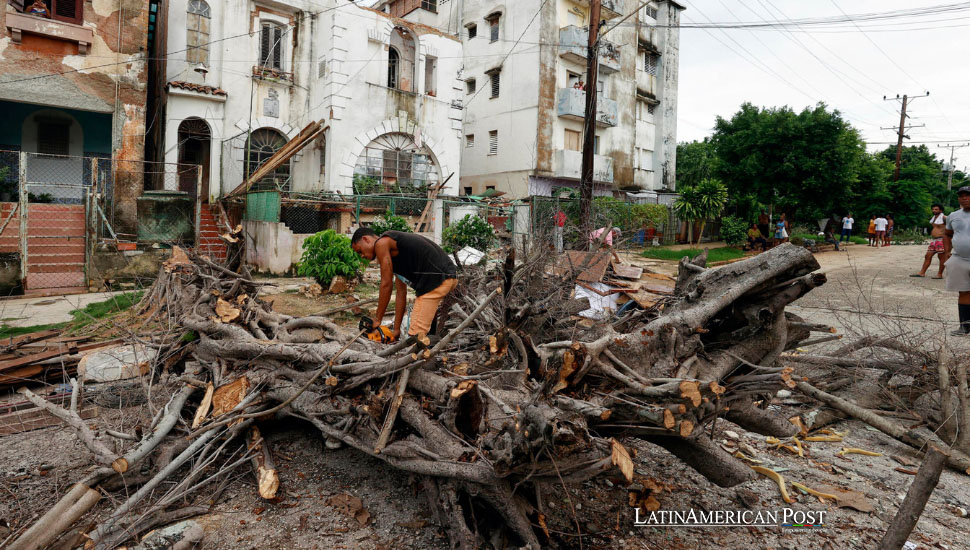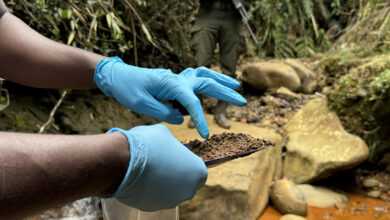Central America Faces Devastating Floods and Landslides from Relentless Rains

Heavy storms and flooding across Central America have resulted in over 30 deaths and forced thousands to evacuate, with severe impacts on communities and infrastructure. The situation is urgent, and immediate action is needed to support these affected areas.
Relentless storms and heavy rainfall have wreaked havoc across Central America, leading to at least 30 fatalities and displacing thousands of residents. According to local officials, the unyielding downpours have caused rivers to overflow, homes to be destroyed, landslides to be triggered, and entire communities to be cut off.
In El Salvador, authorities reported that the death toll had risen to 19, including six children, with over 3,000 individuals currently housed in temporary shelters. “We must save people’s lives,” stated Luis Amaya, head of El Salvador’s civil protection agency, emphasizing the immediate need to prioritize human life over material possessions.
The storms have severely impacted Guatemala. As of Friday, the country reported ten deaths and nearly 11,000 people evacuated, with close to 380 still residing in temporary shelters. Additionally, the storms have caused extensive damage to infrastructure, severely damaging 300 buildings and destroying four bridges.
In neighboring Honduras, one death has been reported, with over 1,200 people evacuated, including 300 in the last 24 hours alone. The rains have isolated 180 communities and destroyed 22 houses, compounding many residents’ crises.
Mexico has not been spared from severe weather, with forecasts predicting intense rains across most of the country. Torrential downpours are expected along both the Pacific and Atlantic coasts and further inland, bringing lightning, strong winds, possible hail, and flooding around rivers. The Mexican authorities have taken preventive measures, including evacuating around 80 people from a children’s hospital in Oaxaca state on Thursday.
Impact on Communities and Infrastructure
The severe weather has caused significant disruptions and damage across Central America and Mexico. In El Salvador, the storms have forced thousands of families to leave their homes and seek refuge in temporary shelters. Many of these shelters are crowded and lack adequate resources, placing additional strain on the affected communities.
Guatemala’s infrastructure has suffered substantial damage, with roads, bridges, and buildings destroyed or severely damaged. The destruction of four bridges has cut off access to several areas, complicating rescue and relief efforts. Authorities work tirelessly to reach isolated communities and provide them with necessary aid and support.
In Honduras, the situation is similarly dire, with numerous communities cut off due to flooding and landslides. The destruction of homes and infrastructure has left many residents without shelter or access to essential services. The Honduran government is coordinating with international aid organizations to provide emergency assistance to those in need.
The ongoing disaster in Central America highlights the region’s vulnerability to extreme weather events, which are becoming more frequent and severe due to climate change. Many Latin American countries, including those in Central America, face significant challenges in adapting to and mitigating the impacts of climate change. The lack of adequate infrastructure, limited financial resources, and high levels of poverty exacerbate the effects of natural disasters on these communities.
Several Latin American countries have implemented measures to improve their resilience to climate change and natural disasters in response to these challenges. For example, Mexico has invested in early warning systems, emergency preparedness, and infrastructure improvements to withstand extreme weather events better. Similarly, countries like Costa Rica have adopted sustainable development practices and policies to reduce their environmental footprint and enhance their resilience to climate change.
Despite these efforts, the recent storms underscore the need for continued investment in climate adaptation and disaster risk reduction across the region. Strengthening infrastructure, improving emergency response capabilities, and promoting sustainable land use practices are critical to protecting vulnerable communities from the impacts of extreme weather.
Emergency Response and Future Preparedness
In the face of such widespread devastation, Central American countries are mobilizing emergency response efforts to provide immediate assistance to affected communities. Governments, non-governmental organizations, and international aid agencies are working together to deliver food, water, medical supplies, and other essential items to those in need.
In El Salvador, the government has activated its national emergency response plan, deploying rescue teams to affected areas and setting up temporary shelters for displaced residents. Authorities also coordinate with local and international organizations to ensure that resources and assistance reach those most in need.
Guatemala has similarly ramped up its emergency response efforts. The government prioritizes the evacuation of residents from high-risk areas and the provision of shelter and support to those displaced by the floods. The Guatemalan Red Cross and other humanitarian organizations are on the ground, assisting with rescue operations and delivering aid to isolated communities.
In Honduras, the government has declared a state of emergency in the hardest-hit regions, allowing for the rapid deployment of resources and personnel to assist with relief efforts. Authorities are working to restore access to cut-off communities and provide emergency shelter and supplies to affected residents.
Mexico, facing its share of challenges from the storms, is leveraging its extensive emergency response infrastructure to mitigate the impacts of the severe weather. The government’s water authority, Conagua, has warned about potential flooding and advised residents in vulnerable areas to take precautionary measures. Meanwhile, emergency services are on high alert, ready to respond to any incidents caused by the storms.
The relentless storms and flooding across Central America and Mexico have caused significant loss of life, widespread displacement, and extensive damage to infrastructure. As these countries grapple with the immediate impacts of the disaster, the need for long-term solutions to enhance resilience and reduce vulnerability to extreme weather events becomes increasingly apparent.
The ongoing crisis underscores the importance of investing in climate adaptation, disaster risk reduction, and sustainable development practices across Latin America. By strengthening infrastructure, improving emergency response capabilities, and promoting sustainable land use, countries in the region can better protect their communities from the impacts of climate change and natural disasters.
Also read: Coastal Populations in Latin America and the Caribbean Face Rising Climate Risks
As Central America and Mexico continue to navigate the challenges posed by the current storms, the resilience and solidarity of their communities shine through. Despite the devastating impact, these communities are coming together, demonstrating their strength and determination. Through coordinated efforts and international support, these countries can recover from the disaster and build a more resilient future.





